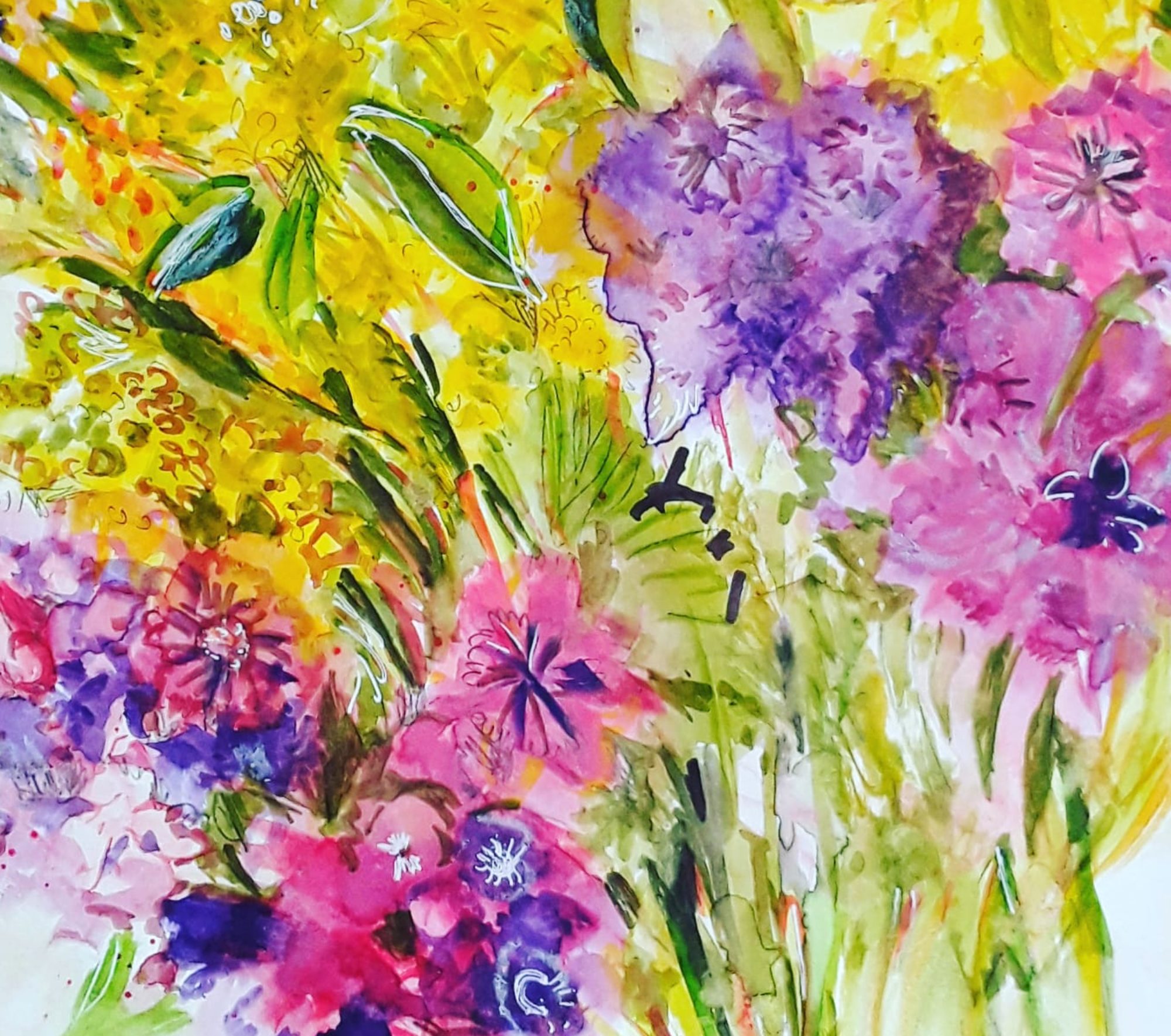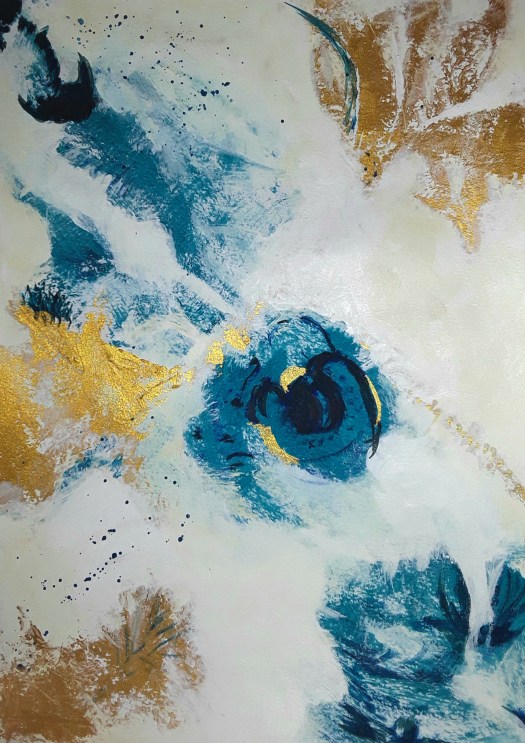
Good morning everyone. This is another page in the art journaling course Sketchbook Revival by Karen Abend. And I really enjoyed this tutorial by Barbara Baumann all about the gestural method of sketching the figure. That is, concentrating on the figure in movement. Basically, you sketch out the direction of the limbs, the torso and the head. Most importantly you study the angles of the tilt of the head and torso. Also, the direction of the outstretched arms and legs. Obviously the photo reference for this sketch was ideal – the pose was quite extreme. Also, unbelievably high off the ground!

After that, the really hard part! To be honest, I already knew about planning out the shoulders, elbows and knees as circles. But in the lesson I learned about the shapes of the upper and lower torso. And that is new to me and extremely helpful. In addition, I appreciated the tips about creating a background of dynamic lines and splodges. In my opinion is does suggest the figure in movement, which is not easy.

As you may know if you follow my blog, I have attended life drawing classes for a few years now. And I’ll finish up with one of my favourite drawings, done from life when we were also thinking about Matisse. In fact, a lot of his later cut- out work is very gestural. So, here’s my tribute to that great French artist. Actually, you could see more of my paintings of the figure in People, a section of my gallery.






































